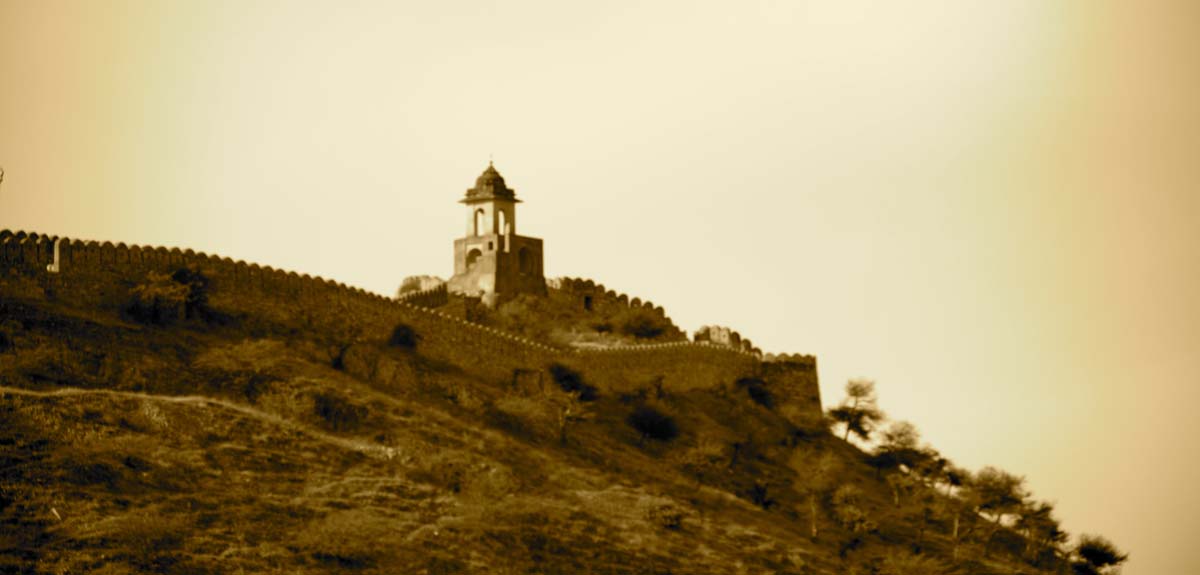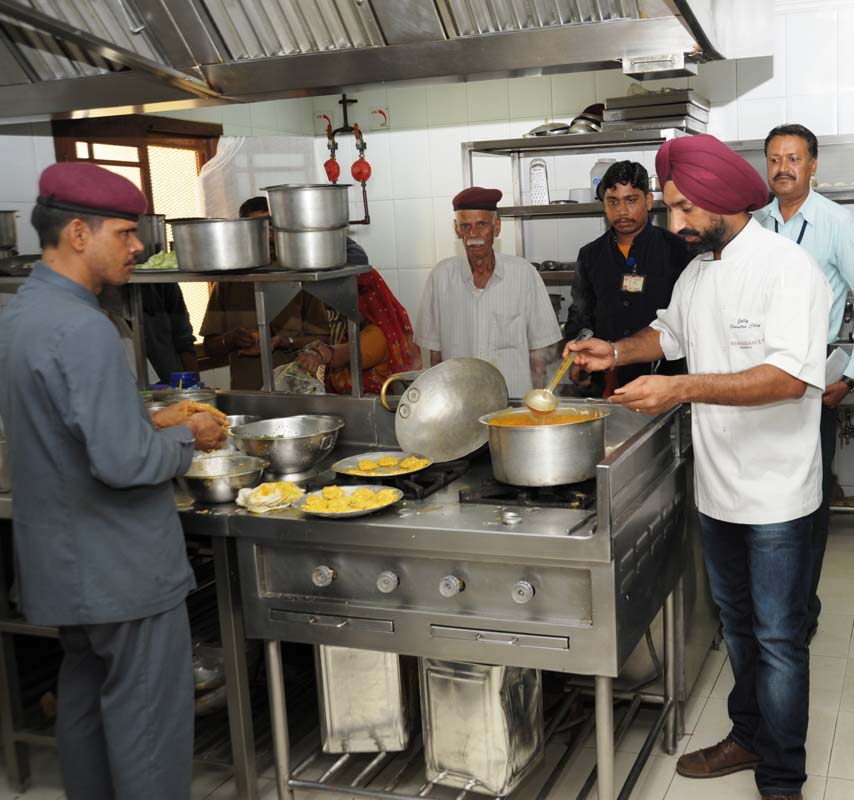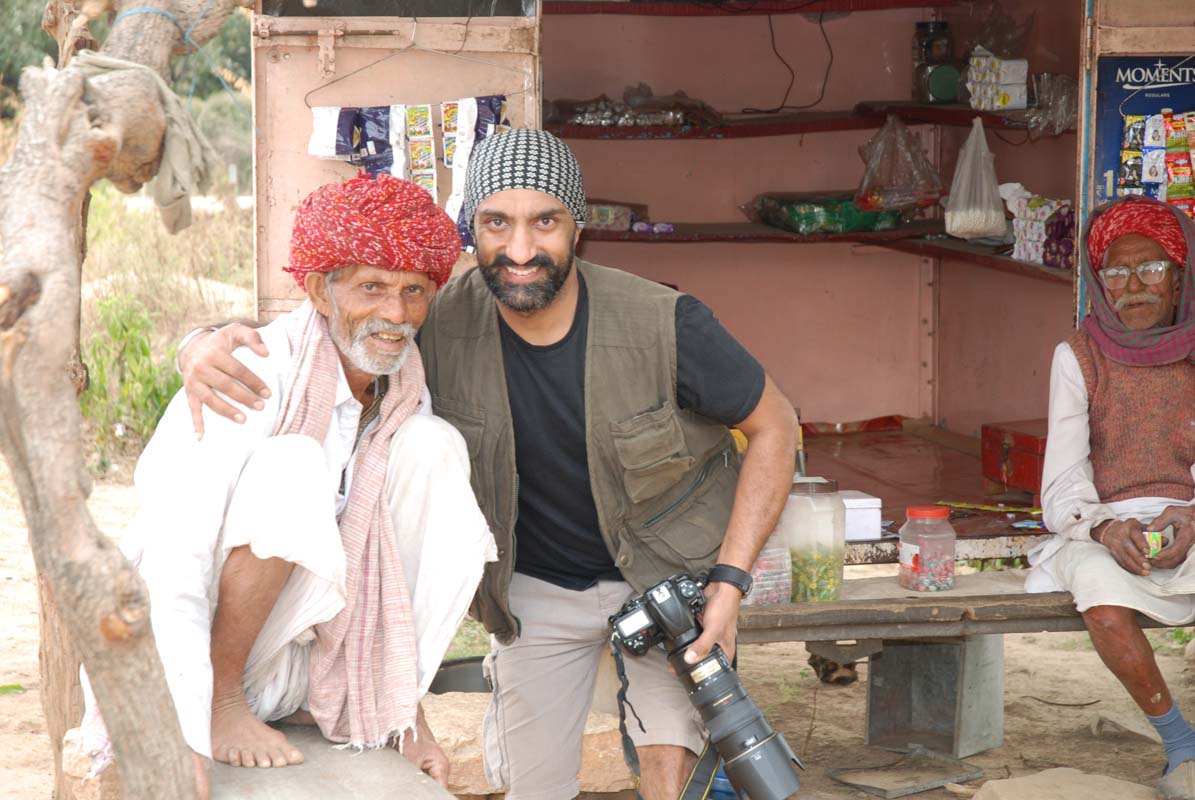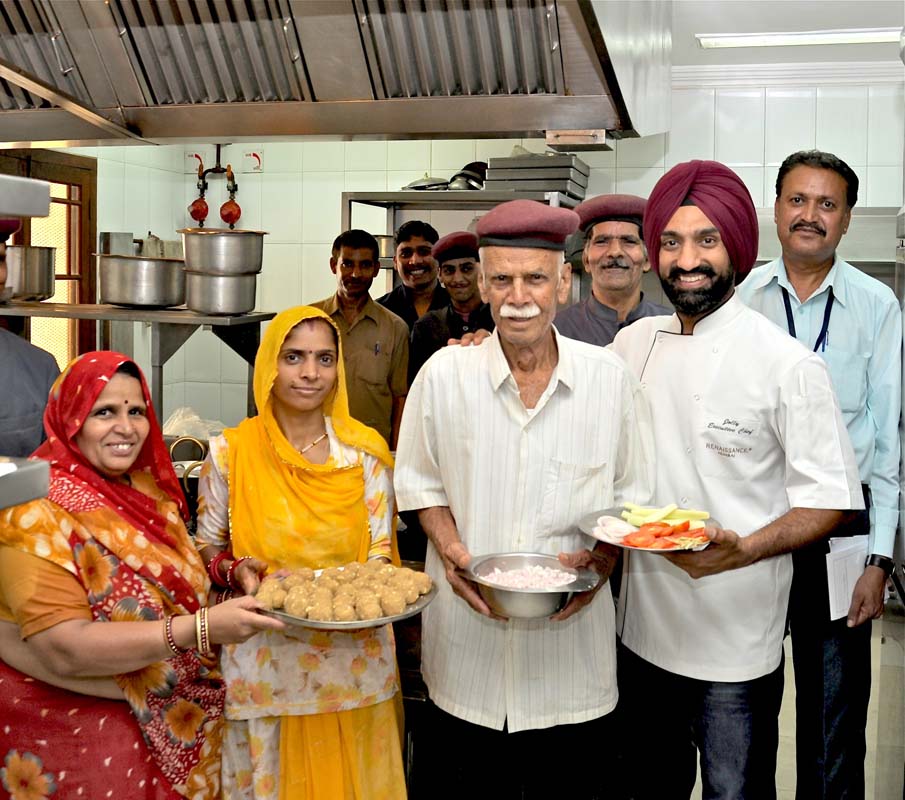Culinary Expedition to Rajasthan
The land of kings, “Rajputana“, today called Rajasthan.
I started my research from the Mewar region of Rajasthan, the state capital Udaipur, which was one of the toughest terrains some 1000 years ago.
My plan was to first visit the City Palace at Udaipur and second was to visit the Chittorgarh fort, though it is now all in ruins.
I was very curious to learn about the facts, like the importance of Chittor in Mewar and why the great warriors are now remembered as heroes; many who were a sacrifice by wives and Rajput women, the formation of their new capital and surviving harsh times in the jungles of the tough Aravalli ranges.
Their struggle continued, they fought till their last breath, they learnt never to bow down their heads. Their first and last love was to lead a dignified life, upholding their honour and glory & so they did proudly.
It was considered a privilege to defend their motherland and to be fortunate in sacrificing their lives; it always was an inspiration to the youth of this patriotic devotion. Rajputana also gave birth to brave women who preferred honourable immolation to dishonourable living, a supreme sacrifice of a mother of her son. They lived gallant lives. This is the land of true heroes who maintained the tradition of fighting for independence unto death.
Sisodias of Mewar were considered the first amongst the Rajput royals, today the oldest surviving dynasty, spanning seventy-six generations and some 1500 years.
They out lived eight centuries of foreign domination and their rulers played a glorious role in the medieval Indian history as tireless defenders of Hindu tradition and kingdom of Mewar.
Legend has it that they were the descendants of the Sun God & hence known as “Surya Vanshi” through Lav, the elder son of Ram (seventh Incarnation of Vishnu), the lord of the epic Ramayana. However, the western historians claim that the rajputs probably descended from Central Asian tribes who, early in the Christian era came across the northwest frontier via Kashmir. By the 2nd century A.D they moved south to what is now known as Gujarat. They started settling in several coastal cities, among which was also Vallabhi.
In the 6th century, Vallabhi was sacked by savage invaders from the west but Pushpavati, the pregnant queen, was then away on a pilgrimage. However, on learning about the news, she detoured towards the Aravalli hills to give birth to her son in the caves, who was later called Guhil, meaning cave born. Entrusting Guhil to the tribal Bhils (their name is derived from the word bil, meaning bow) she committed sati. In the year 568 AD, when he was eleven, the bhil chief granted Guhil his first territory, thus was born the State of Mewar. Guhils descendants ruled over the area for over seven generations, largely depending on the bhis for their vigour and skill in guerrilla warfare.
The symbol of Maharana of Mewar thus has a golden sun representing solar descendants, with a Rajput on one side and a bhil on the other. The descendants of the guhils were also called guhilots or the gehlots, whod move further to the plains occupying territory around Udaipur. The Gehlots later changed their name to Sisodias, after a village they had briefly halted en route.
In 734 AD, the tribe’s men killed the 7th ruler accidentally, and the 3-year-old kalbhoj became the king. Later he grew up to be known as Bappa Rawal (bappa meaning father and rawal, a title of the kshatriyas caste), founded the Sisodia clan in Mewar.
Bappa rawal grew up as a cowherd; he spent much of his time studying Vedas in the hermitage of the ascetic, Harita Rishi. Eventually the rishi invested him with the title Dewanji Eklingji (referred to Shiva), the legacy that the succeeding maharanas continued to bear.
Whilst still very young, Bappa learnt that he was the nephew of the ousted ruler of chittor. Giving up his life as a herdsman, he moved to the fortress city of Chittor and wrested it from Man Singh Mori of Malwa. Chittor derived its name from the Mori rajput king who ruled in the 7th century called Chitrang.
The sisodias were dislodged from the chittor fort for about 2 centuries but eventually they won it back and it was their capital till mid 16th century, ruling an area stretching from Gujarat to Ajmer.

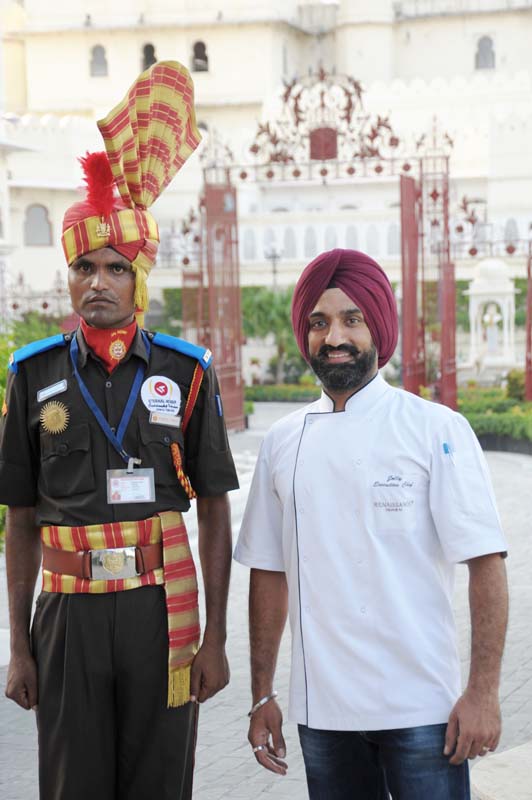
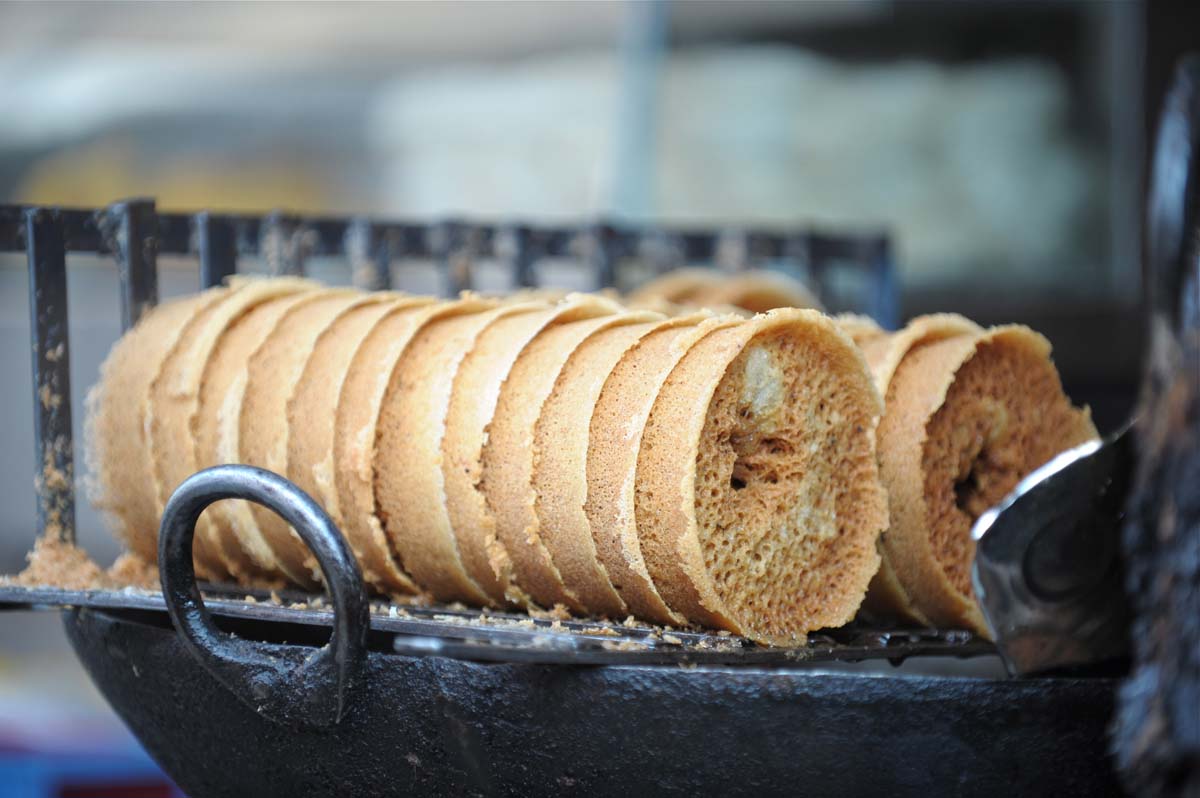
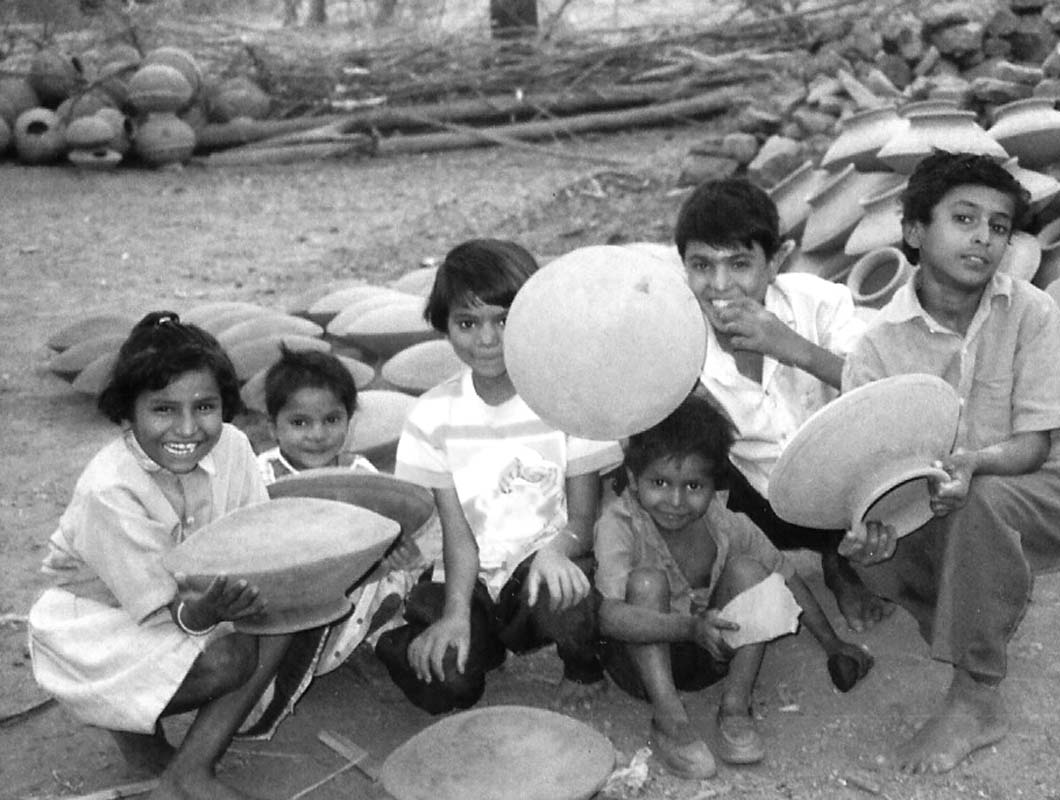
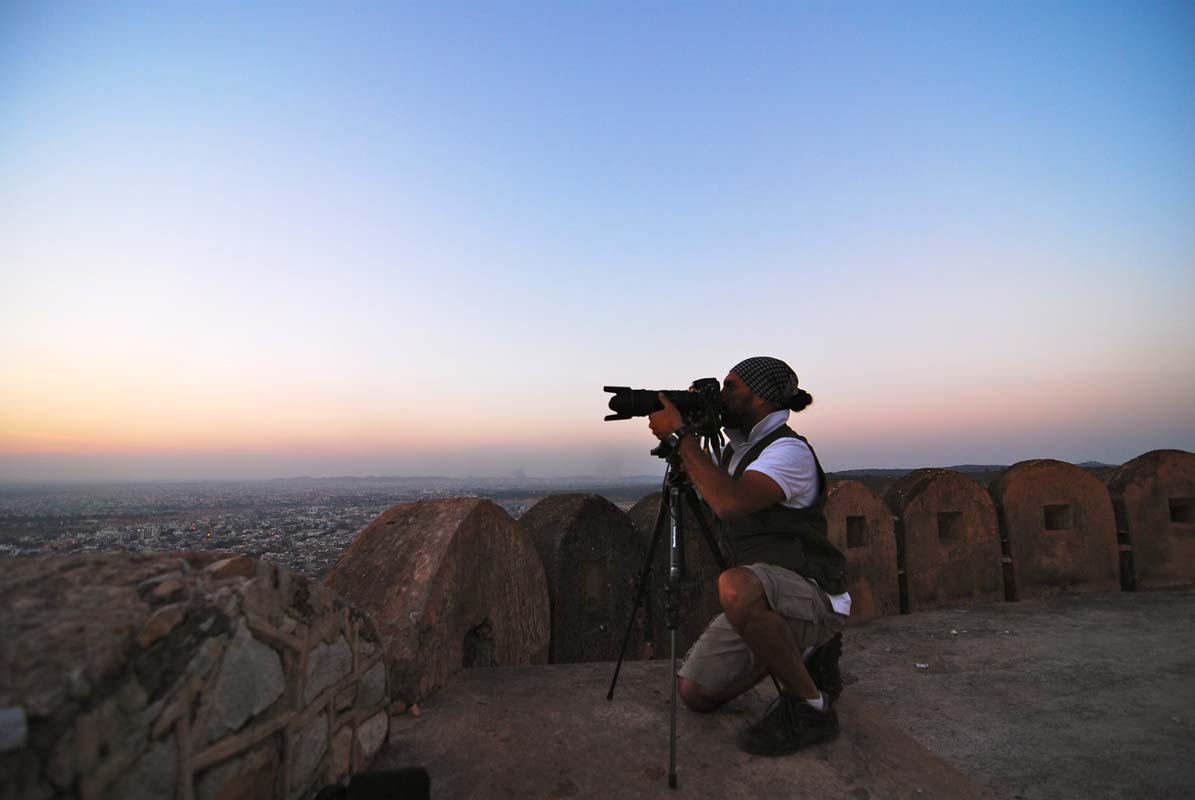

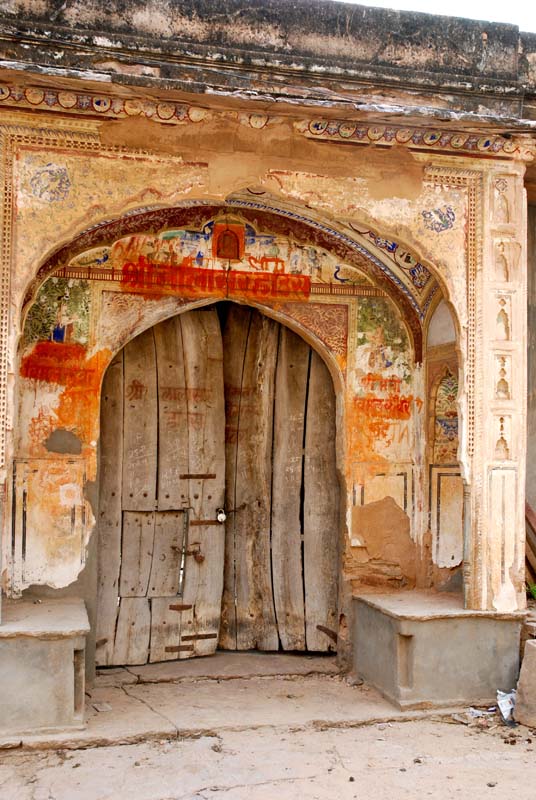
Chittor endured some of the most famous sieges in history.
The first plundering occurred in 1303 by the then sultan of Delhi Alla ud din khilji, on the pretext of winning Padmini the queen of Rawal Rattan Singh. The king was outwitted by the sultan and demanded unconditional hand over of the Rani Padmini. On learning this, all the women in the fort performed the ritual Johar (the voluntary self-immolation of women). It was an intense fight and finally Alla ud din khilji appointed his eldest son Khizer Khan as the governor of Chittor and the town was named after him as Khizerabad.
However, Ajaisi survived and retreated with a small entourage of soldiers to the hills aided by the bhils and determined to win back Chittor, they carried on their freedom struggle.
In 1326, within 2 years of khilji’s death, Rana Hamir Singh, grandson of Rana Rattan Singh liberated Chittor from the Turkish rule. It was then the only Hindu kingdom left unfettered in northern India, all other Rajput states succumbed to the Muslim Sultans. To reaffirm their supremacy over other rajpur clans, the Sisodias were given the title of Maharana (meaning, Great Warrior) as opposed to Maharaja (meaning great ruler) of other rajput states. Thus it started with Hamir Singh, the 43rd generation of Sisodias to rule Mewar became Maharana Hamir Singh.
Chittor enjoyed a period of stability during one of the greatest warriors of the era, 1433 ~ 1468, Maharan Kumbha. He won the spectacular fort of Kumbalgarh, which after Chittor was the most important fort in Mewar. Under his patronage, art and music flourished. There were many Jain temples and schools were constructed. He himself was a poet and wrote plays, unfortunately killed by his own son Udai, later known as the hatyaro (Murderer).
Mewar enjoyed and adored the rule of Rana Sangram Singh Or Rana Sanga, as his people popularly knew him. Had it not been for the Gun powder brought by the moghul ruler and the treacherous alliance of his general with the enemy, Rana’s dream of establishing Hindu rule over north India would have come true, but having lost the battle of Khanua, 1527 against Babur, caught off guard, he vowed never to return except as a victor. Even after winning the battle, Babur didn’t occupy Chittor.
Chittor was again besieged in 1556, by Sultan Shah of Gujarat, as the excavated silver mines lured him. It was a fierce battle fought and on Karnavati, the queen of Mewar then, wife of Rana Rattan Singh sending Rakhi (sacred thread, meaning brotherhood) to Humayun, his intervention pushed the Sultan back. During this, Rattan Singh’s brother survived the sack and finally took to the throne. Banbir, his uncle, got him killed and was on the lookout to get Udai his younger nephew killed, when a major sacrifice performed by the maid of her son in lieu to save the heir to the throne of Mewar is remembered even today with respect.
Udai was secretly smuggled out of the fort by Panna Dai to take refuge, and eventually reached Kumbalgarh fort. When he turned 15, he was recognised as the true heir of the throne, but only ruled briefly.
During this time Humayun’s son Akbar was all set to conquer Rajasthan. Being against a powerful army, Udai had to retreat towards the lake side city of Udaipur, named after him. This was the third and the final sack of Chittor in 1567.
Rana Pratap, the patriotic prince and the much loved hero, ascended the throne of Mewar, 1572. He was obsessed with the desire of winning back Chittor and refused to accept the Mughal supremacy.
In a bid to subdue Rana Pratap, Akbar laid siege and the famous battle of Haldi Ghati was fought in 1576. Akbar knew of only one way to defeat the Rajputs of Mewar which was to divide and rule, hence why he got into a matrimonial alliance with Raja Man Singh of Amber, who in return was a general in the Mughal army and fought for them. Despite victory for the mughals, the battle of Haldi Ghati is significant for the tenacity displayed by the Rajputs allied with the bhils.
Rana Pratap and his kinsmen live in exile following the battle and survived on fruit, berries and jungle resources for many years. For the last 10 years of his life he freed most of Mewar except Chittor.
Pressurised by his nobles, Maharana Amar Singh entered into peace treaties with the Jahangir. He finally regained Chittor condition to not fortify the city. Peace was established; hence it was time for considerable construction and development. The dam wall was strengthened that encloses lake Pichola.
Fateh Singh 1884 ~ 1930, was the 73rd Maharan of the line. In the tenacious tradition of his ancestors, he steadfastly held out against accepting a subservient status to the British. During his time, several schools, a college, dispensaries and a railway line, connecting Udaipur and Chittor were built.
When India became independent in 1947, Maharan Bhopal Singh occupied the throne of Mewar. Mewar was one of first out of the 500 Princely states to merge with Indian Union. 2 years later 22 princely states merged to form the Union of Greater Rajasthan, headed by the ruler of Udaipur. Maharan Bhagwat Singh was adopted to ascend the throne in 1955. 1st November 1956, the state of Rajasthan came into being. In 1971, the rulers of the erstwhile princely states were derecognised, their privy purses and titles were abolished in one stroke. Maharana Bhagwat Singh’s intellect decision to invest in private companies, charitable trusts, social welfare and education ensured the survival of his property and also entrusted the responsibility upon Maharana Arvind Singh, who is married to Princess Vijayraj, the granddaughter of the ruler of Kutch, to administer the house of Mewar.
As the successive Maharanas through history have done, Arvind Singh Ji the 76th generation even today makes a pilgrimage to the temple of Eklingji every Monday.
While I was on the search for Information, I came across certain facts such as:
- Maharan Pratap’s horse had a trunk nose made like an elephant, so in a battle the elephants think it to be their baby and wouldn’t attack him.
- He would always carry 2 swords while in the battle field, he would offer it to the enemy to fight with if his opponent lost it while fighting, thus giving him an equal chance. Such were his beliefs also while at war; it speaks very just of him.
- Maharana was once offered 20,000 bhil men and lots of gold by a Jain sage to avenge against the Mughals in a battle, therefore bhils & jains play a very important role in the making of Mewar, thus their emblem also features their togetherness.
- There were sports like the elephants tug of war.
- Maharana Bhim Singh’s daughter consumed poison on the day of her marriage proposal, as out of ill fate 2 kingdom’s princes came to offer their hand, and to the dismay the Maharana couldn’t deny either, therefore to avoid embarrassment and war she saved her family’s honour & dignity by this act of courage.
- Only after praying to the sun god would they would eat their meal. If for some reason the sun wouldn’t show up, they would pray to the golden sun shield in their pray room before eating.
- The plaster on the walls inside of the fort is so smooth even after 1000 years, they say a mixture of urad lentil, egg white, and eggshells have also been a part of the plaster on the walls.
- Only natural source of colours were used for paintings which haven’t faded till date, blue from lapez lazuli, black from gunmetal, red from red oxide, white from zinc, green from malachite stone, yellow from gold in blending with gum, mango leaf, cow’s urine. The brush was made from squirrel tail hair.
- The camel defined love and denotes Jaisalmer, the elephant defined good luck and denoted Jaipur and the horse defined power and denoted Udaipur. It also relates to certain beliefs and myths for such an explanation as above.
- The banjaras, always on a nomadic mode staying by the road sides of many a Rajasthan town always had one belief; that they would go back to chittor only when they win its freedom back.
- Rana Sangha even had his influence felt till Kabul and Kandahar once.
- Once every year after Diwali, it was declared a hunting festival in the hills of Nahar Magra, a very difficult terrain both for the horse and the man overlooking lake Pichola, known as “Moharat ka shikar”, it would follow with a royal feast. They would never hunt during the monsoon as it was against their principle as it was the mating season, and also to avoid hunting female species.
- There are tribes in which during the wedding ceremony the bride’s father cooks the lentil and all the invites come along carrying their own bread, thus saving the bride’s family of all the hard ship to prepare and it gets economical.
- Chicken was considered as ready cash for the bhils, as in needy times it could be sold quickly and prepared fast.
- “Mewar” got its name from, “Me” means clouds and “war” means place, situated on top of the Aravalli ranges, thus the name came to being.
- “Marwar” got its name from, “maru” which means soil or sand, referring to the areas being devoid of green and cultivation was called Marwar.
- “Merwar”, “mer” is a place in the Himalayas for meditating, just below the clouds, therefore also altitude wise it’s below the Aravalli ranges, thus its name.
- The Mewar rajput and warriors basically survived on the fruits, berries, jungle resources, as the bhils they were also known as gatherers.
- A maid sacrificed the life of her son for saving the true heir of Mewar, she saw her son being killed in front of her eyes, replacing the kings son for her son. Panna Dai was truly a dedicated servant to the Mewar Kingdom.
With the fair understanding of:
- The land and soil type which is hilly, gravel and rocky rather than a fertile one,
- The weather conditions are drier and with high temperatures, the sonly water source were a few man-made lakes and rain water.
- The business of the rajputs here was battle and only battle; their objective in life was to live a life of dignity.
- The women folk here would take care of cattle and work at home, waiting for their sons, husbands, brothers and father to come back from the battle. It was here I felt that there was no time and inclination for leisure, therefore I am of the opinion that the cuisine of the Rajputs of Mewar was typically battle food or survival food.
- They survived on whatever natural resources were available then. Fruits, roots, tubers, leaves, grains, forest resources and all the seasonal growth; they were basically gatherers, warriors and hunters.
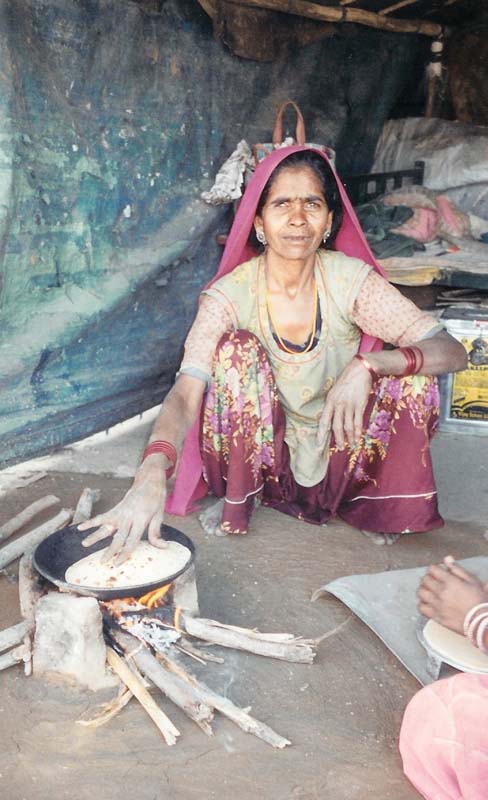

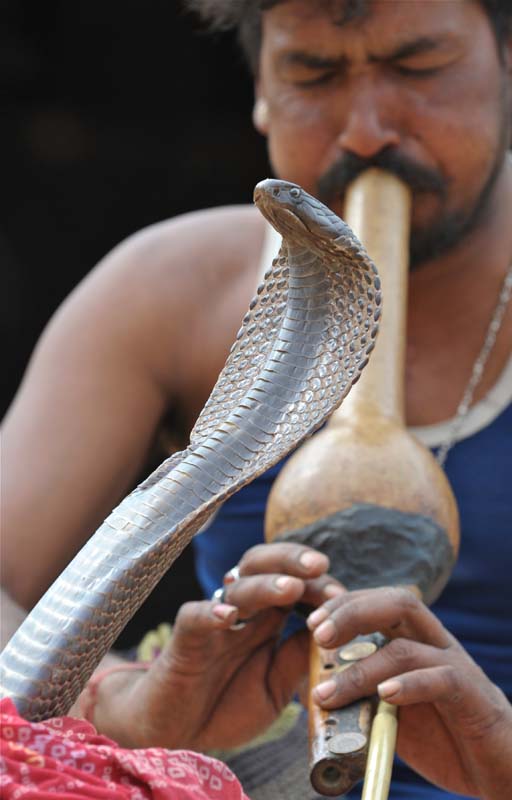

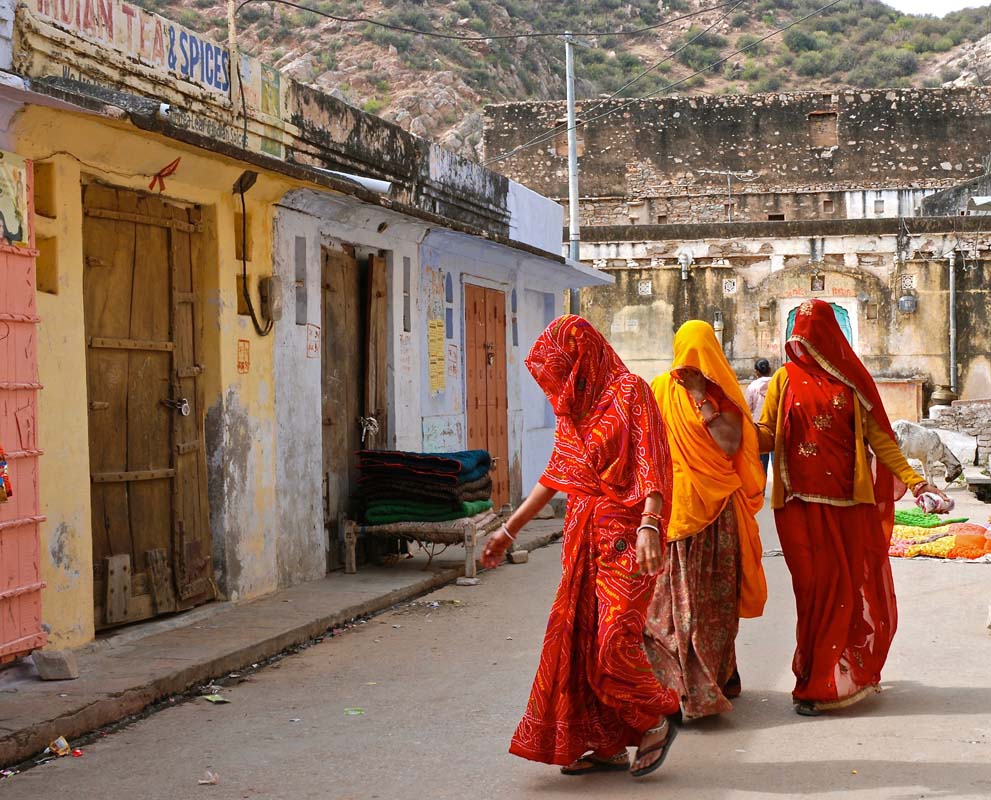
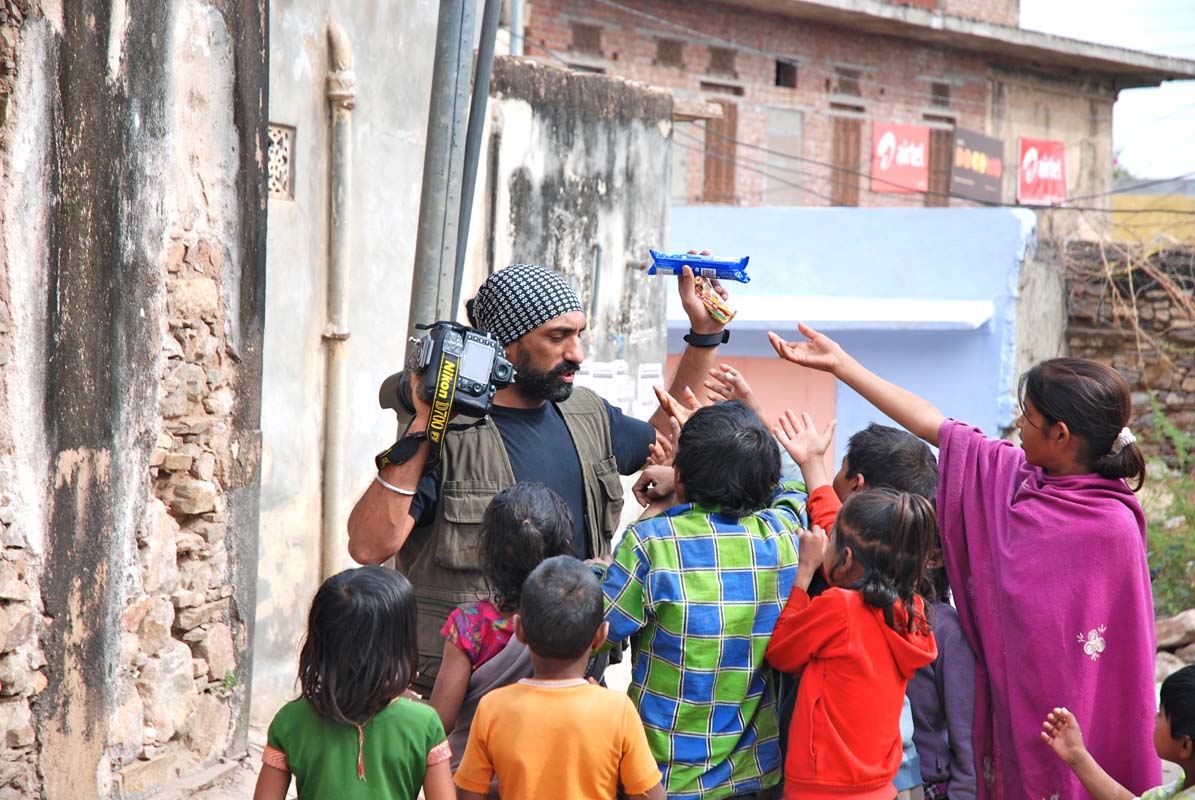
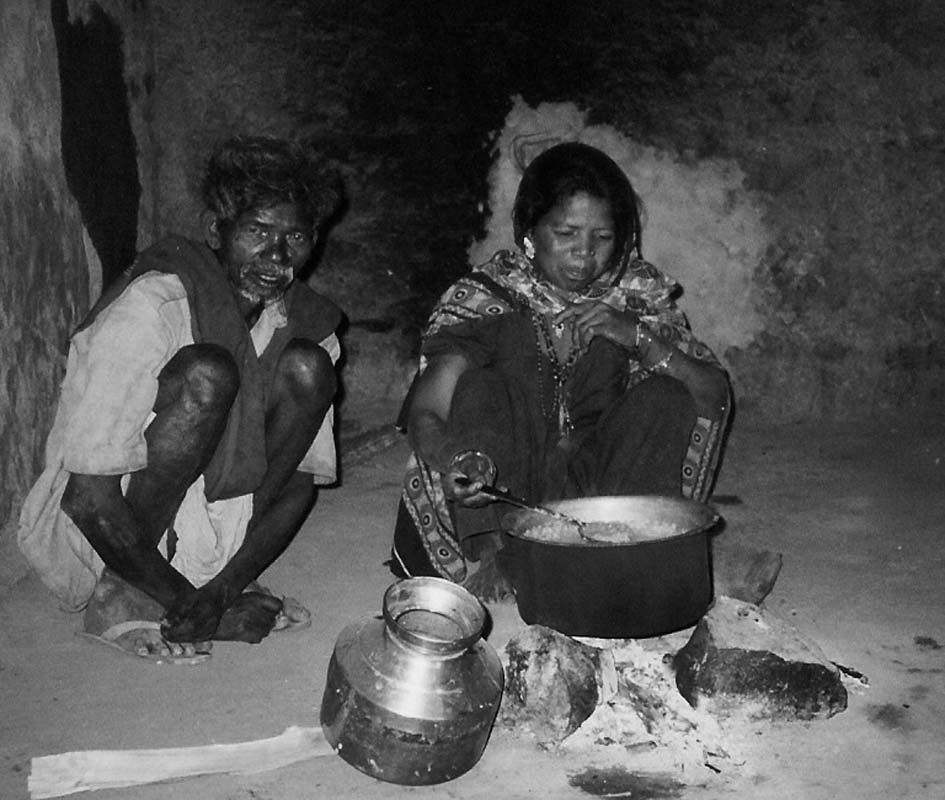
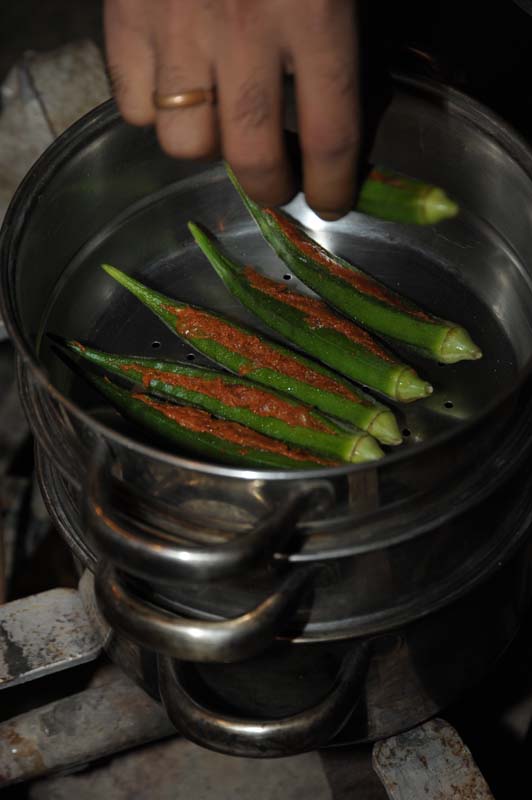
At ShivNiwas Palace, Udaipur…
I was fortunate to be invited to a feast. The specialities of the palace were made, a huge spread comprising of akhaa Palak (mashed spinach), khatto (a sour curry), papad mongodi (gram flour dumpling dish), sufeed maas ( a white lamb curry cooked in yogurt), maas ka soola (charred lamb kebab on a skewer), makki roti (white corn bread) , pickles and chutneys. It was a nippy February evening, and this wonderful dinner by the lake Palace view made it so incredibly special that the taste still subtly lingers.
On having endless discussions with the associates and the nobility, I was inspired to get deeper into this subject, here we are talking about Maharana’s and Mewar some 1100 years ago. I planned a visit to the Food Crafts Institute, where upon meeting the principal Mrs Sehgal, she assisted me in getting the information and organised a meeting with the bhil tribe students who shared a lot of valuable info of the food and their lifestyle.
On my return, I halted by the Shikarbadi, a jungle lodge kind of a retreat used by the then Maharana’s for their favourite pastime, hunting. Here, I met up with the cooks who I believe have lived their lives and their generations followed in the same kitchen.
It was lunchtime, Maas ka soweta ~ a spicy preparation like porridge, consisting of meat and corn, Laal Maas ~ Local heady “Mathaniya” a chilli spiced goat preparation, and maas ki kadi, which is lamb braised in yogurt flavoured with fresh mint.
The oil medium used here is predominantly mustard, and in some areas, groundnut. The fuel used is fire wood or dried cow dung. Fired mud pots that are known as “Ghare ki handi” are used to cook food in.
Cheetal deer and wild boar keep up the charm of this place even today as they graze around by the little pond in the early evenings.
On the return to the palace I came across the Gadoliya lohar hutment, the banjara ironsmith clan from Chittor, who till date pledge to settle back in Chittor, but only if it became free. They live on eating wheat/ corn bread with chutney or “dal kalbeliya”, split urad dal preparation.
Having dined at the hunting lodge, I proceeded to Sajjangarh, a monsoon palace of the then maharana Sajjan Singh. It was here they spent time during the monsoon, when the clouds would come down. It was also a perfect hunting location, amidst the tricky terrain where both their guts and skills would be challenged. The source of fish here was from the lake Jaisamand, the other being Rajsamand which was practically dried then. The potter gets the mud from a nearby village called Bathera, as with the development of the city there is no clay or soil left, but only civilization.
Experience with the bhils, in the forest reserves of kotra.
I wanted to meet the bhils; situated in the forest reserves of kotra in Jarol, about 5 hrs from Udaipur to the southwest. This visit was thankfully organised by an NGO then, called Astha.
They are involved in the welfare of the bhils and other Adivasi tribes. Here, I was exposed to the real life style, food habits, and agriculture.
Learnings:
- Raab, a protein rich drink of maize and buttermilk, spiced with cumin and chillies, it is practically savoured at any time of the day, and is a meal in itself too.
- Makki (corn) is basically a monsoon crop. Channa dal needs minimum moisture and grows with just the dew, so it is cultivated in the valleys of the aravalli ranges.
- They believe in eating only seasonal crop.
- Cheel is a type of spinach that grows along with the wheat crop. This is also added to the khatto kadi, slightly sour.
- Spring flowering “mahua” liquor makes a sweet tasting homemade drink.
- Bhils are basically gatherers. They survive on forest reserves and collect tendu leaves to sell, this being their single popular revenue generating profession. Kathodias are one of the most primitive tribes in India today.
- During their wedding, the bride’s family makes the lentil preparation and all the invites get along with them the bread to eat. “lapsi no khatto’, is traditionally had during their weddings, it’s a sticky broken wheat preparation sweetened with jaggery, and alongside a thin gram flour and yogurt curry, spiced with chilly and mustard.
- Children here easily handle bows and arrows with precise accuracy.
- Cooking vessels are mud pots, wooden ladles, khakara leaves, stone grinders and mashers, wooden sticks for pounding grains and spices.
- They grow coriander, garlic, corn, lentil, wheat, mustard and fenugreek. Lots of other local vegetables and fruits are grown wild, which is seasonally consumed. Many have medicinal benefits, which are known by the elders of the tribe and they use it as a remedy to various illnesses.
- The women folk go to the jungles to collect roots and tubers for their meal and the dried cattle dung for fuel.
- Purple yam, elephant foot and turmeric kind of vegetables are cooked by boiling and are consumed as such. On the way back they buy the buttermilk from the financially better off tribes, who rear cattle herds.
- Injured cattle are fed with jaggery and mahua, a springtime fruit to cure internal injuries.
- Water being scarce, the tribal folks have to travel long distances walking to fetch pots of it.
I returned back with loads of appreciation for the “bhils”, tribe, and concern for them and their children. The learning here was to survive in the worst given scenarios and managing every resource from the woods and nature. The sky here was my ceiling and the earth was my bed.
I then decided to meet with the royal family and the renowned families of Mewar.
On meeting with Mr Vijay Singh Bedla and the personal head cook of Maharana Arvind Shree ji, named Shri Bherulal.
The house of Bedla’s has been involved a lot with restoring their cuisine. Right from the beginning they have played an important role in the culinary field.
Earlier days, not so long ago, the generations after Maharana Pratap would fancy having specialities from different states in terms of food and art, called “Rajwade ki Maang”, then the special cooks and artists were invited to show case their talents. Thus, the food of Mewar evolved and cuisines were blended with various bordering states and neighbouring countries. Their influence reached Kabul and Kandahar one time, long ago.
A lot of food items were available here due to trade, also the rajputs and bhils would ambush the on passing traders with food supplies to survive as they very rarely cultivated. As their alliance stretched till the spice route, the Mughals were upset with them for they being a hurdle to them for the oncoming caravan from Sind (now in Pakistan). The royal cooks were called “Jeemanwala”or jeeb bhaane- wala or one who cooks to your palate.
Few of the Rajputs eat pork meat but the Rajputs of Shekhawat wouldn’t eat it as they were associated with the Mughals in wedding alliance. Thus to keep up the religious beliefs, they avoided pork.
- Nathadwara is known for its best quality rose water available.
- “Saheliyon ki baadi” had the best quality water available, the cooks would requisite the water from here to do the special dishes, also the water from the rivers and the lakes had specific taste, and all differed from each other.
- “Lawajma”, ment uniformed procession according to protocol.
- “Paneera”, ment a leisure place where drinks, especially wine and fruits were served.
- Rajsamand in Mewar has the best quality marble available, only 2nd best to the makarana of Ajmer.
- The low lying seating chownki table is known as “Bajod”
- Khakra leaf comes from a tree called khejdi.
- Neemach in Mewar has khus khus.
- There is an abundance of bitter neem leaf grown wild here.
- Silbatta is also called “Khad” & ookhalo is hamam dasta or mortor and pestle.
- Snacks had here is known by, ” Khaarbujna”.
- “Maanwar” means, Courteous offering to guest.
- Hot stones were also used to grill the meat on, as there were no hot plates or griddle available.
It was knowledge worth sharing with the cook, now retired from the services of the Maharana, but he still does his private caterings.
From here, I moved on to “Kumbalmer”, now known as “Kumbalgarh”. It was named after Maharana Kumbha, one of the most successful rulers of Mewar dynasty. The fort wall is only 2nd to the longest “Great wall of China”, 36 km in length. With 360 temples within, many are Jain and Shiva temples.
The battleground of the very famous battle Haldi Ghatti, which was fought between the Great Mughal Akbar and Maharana Pratap is situated enroute Udaipur and Kumbalgarh.
I reached the jungle resort hotel by late evening and was warmly welcomed. Fire wood was burning and a hot “sulas” or barbeque dinner was organised. Peacock’s singing in the sun kissed fields, and a whole range of long tailed birds chirping was the most pleasant morning alarm I have ever woken up to.
I left for the villages nearby to observe the daily chores of the locals. Sugar cane juice was being extracted to boil it down to make jaggery. It was to be sold by the evening. The fields were being watered and the women were making the morning breakfast. Many were already in the woods to get the fuel for the next meal cooking.
One such house welcomed me to share their breakfast and unfold the secrets of their healthy lifestyle.
From their farm came a type of spinach called Cheel, garlic, red chillies, coriander and a local gourd. Buttermilk was made from yogurt and made to boil. In it was added roughly crushed dried corn kernels, to cook to tender, seasoned with roasted cumin, spiced with chillies and salt was added to get this wonder drink, rich in protein. A vegetable was made with gourd, which basically a stew kind of preparation to be had with corn bread, made on an earthen griddle heated by firewood.
From here, I left for the Kumbalgarh fort. I wished to cover the whole fort but was amazed at learning about it being 36km in length. It was here that the young boy then, Uday-11, was sneaked out from Chittor fort by the royal maid, Panna Dai.
The best thing about this fort then was that it was unapproachable by the enemies and until they closed in, it couldn’t be visible; hence it commanded a very strategic position.
Post fort’s visit, I decided to visit yet another village home to learn some special bread of Mewar called “Maki ka Dhokla” and “Paanya”. The former being a steamed corn bread and the latter being a khakara leaf wrapped, baked corn bread.
On returning to the jungle lodge hotel, I decided to take some locally available spices, vegetables and ingredients to try dishes in the hotel kitchen. We cooked a dish of roasted chickpea lentil and buttermilk, called “Pitod”. The gram flour would be reduced with the buttermilk and spiced up with coriander, garlic, asafoetida, ginger, and red chili powder. It would be spread evenly on a plain tabletop and slices of it would be cut after cooling. The same would then be either fried of simmered in a yogurt curry.
My dinner was at the cooks house where I was invited to a typical local fare which included a special bread called ” maki ka dhokla” or steamed maize flour bread served with stewed lentils. I also had a dish called “maas ka soweta”, a spicy preparation of lamb and corn kernel.
Local spice like “akhal khora” and “Pepal” is used in the typical spice blend for certain recipes. “Bel” leaf (used in offering the Hindu diety, “Shiva”) is used here to prepare herbal tea and is recommended for better metabolism.
It is also believed that, during battle times, it was uncertain where, when and what to consume for survival, therefore they either looted the passing caravan of the mughals, banked on the forest reserves or hunted birds and animals. The process of cooking was either roasting on open fire, grilling on hot stones or cooking in the pit dug in the floor called “khad”. There were also times when the warriors had to keep turning the bread which was being baked with their sword to avoid burning, whilst sitting on the horses back as to always be on the alert mode. Such were the times in the by gone era.
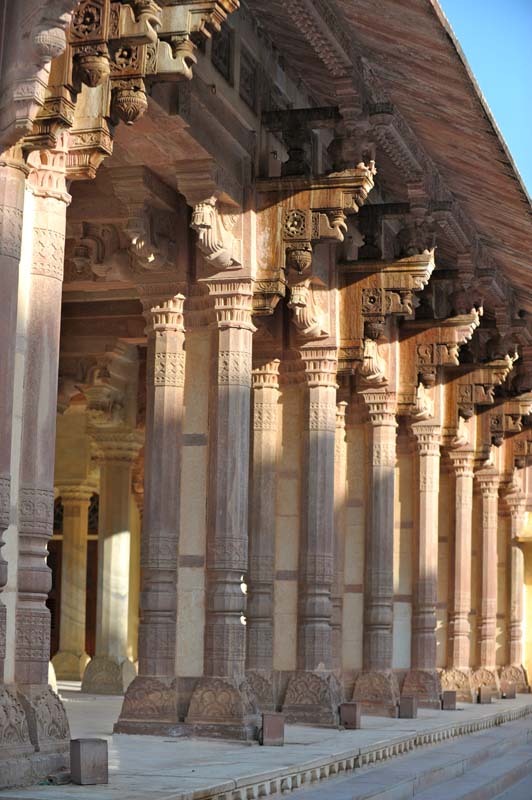
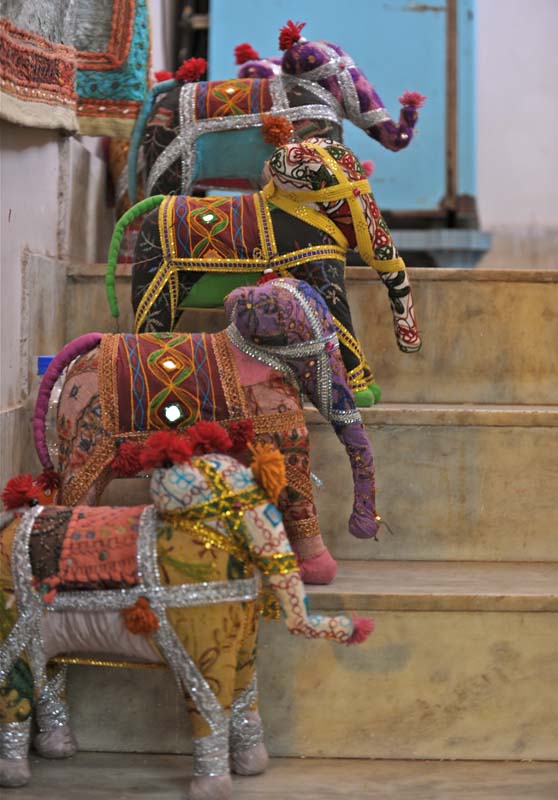
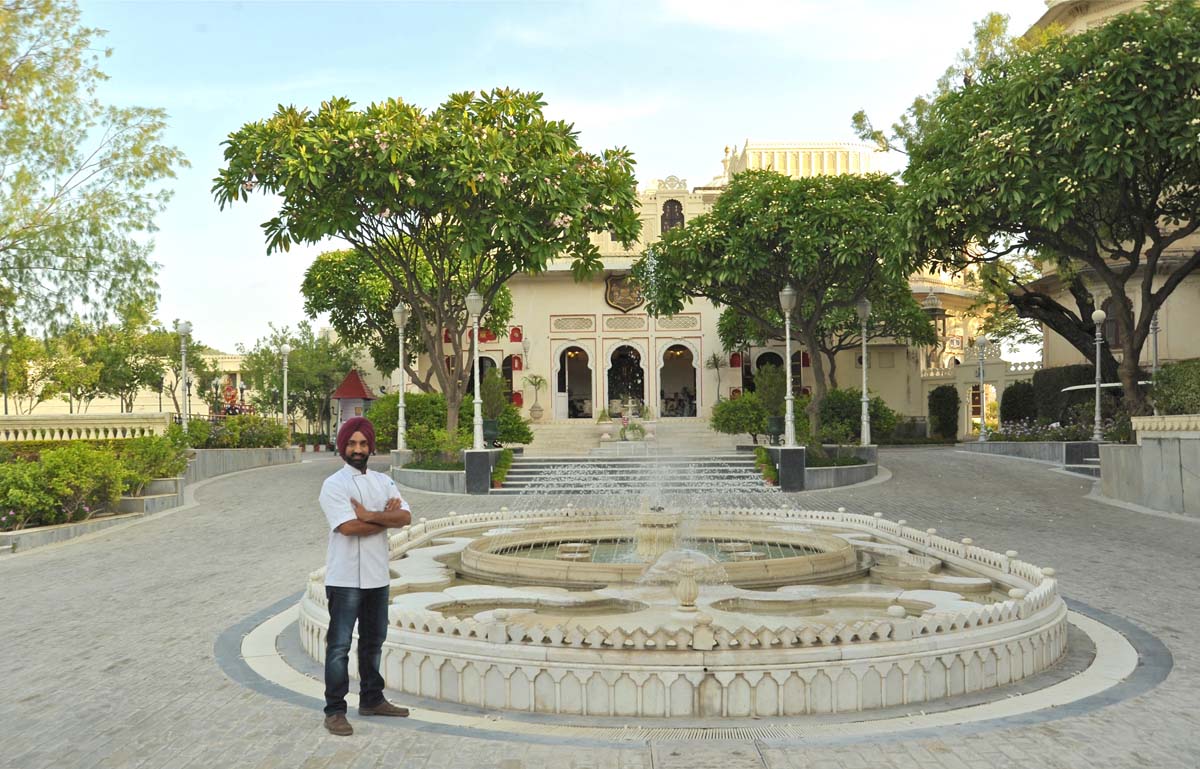
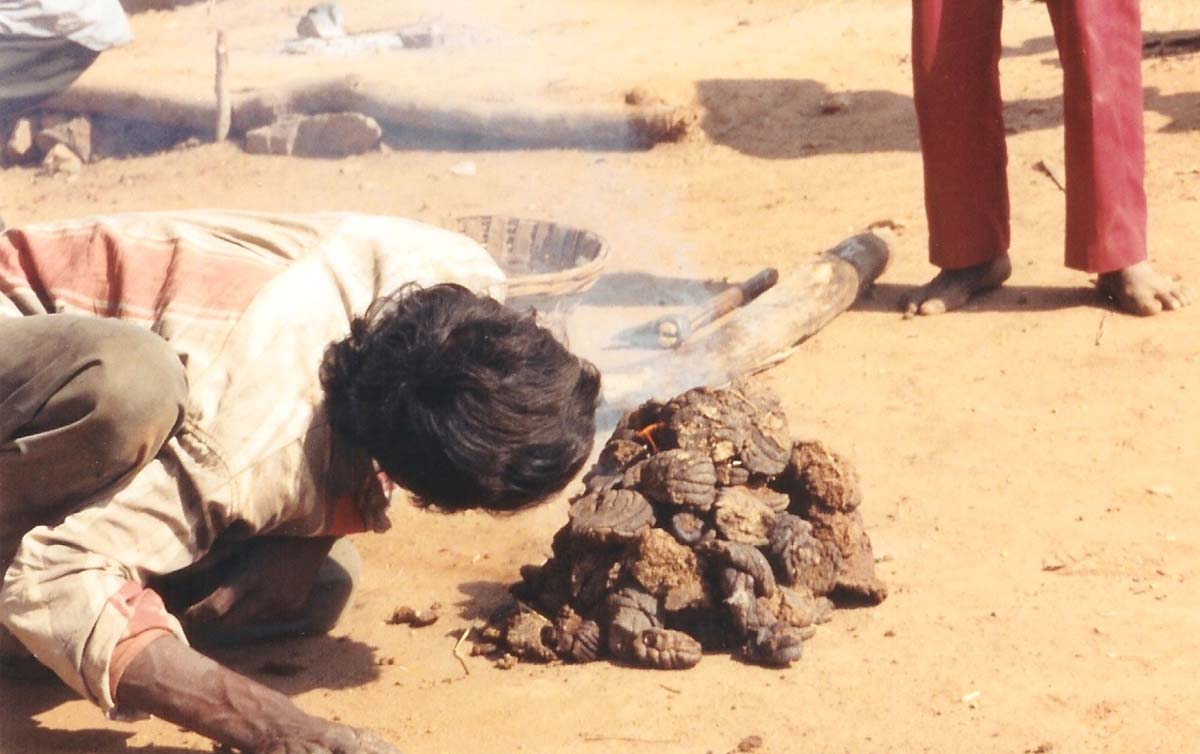
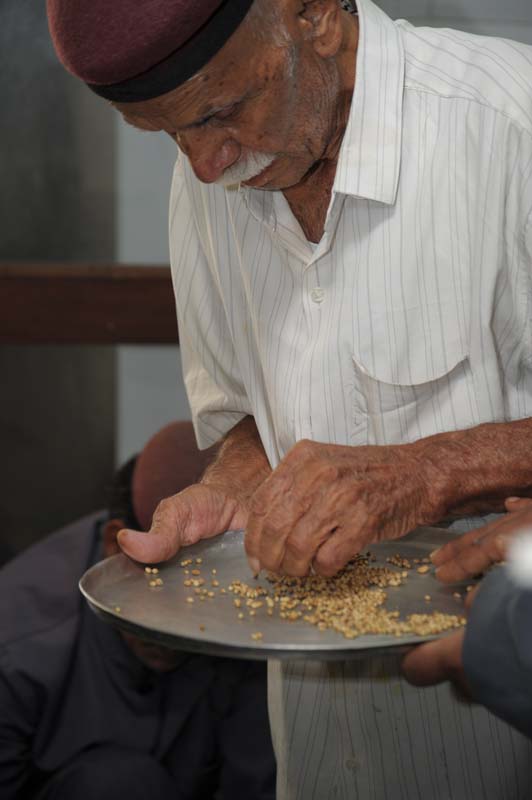
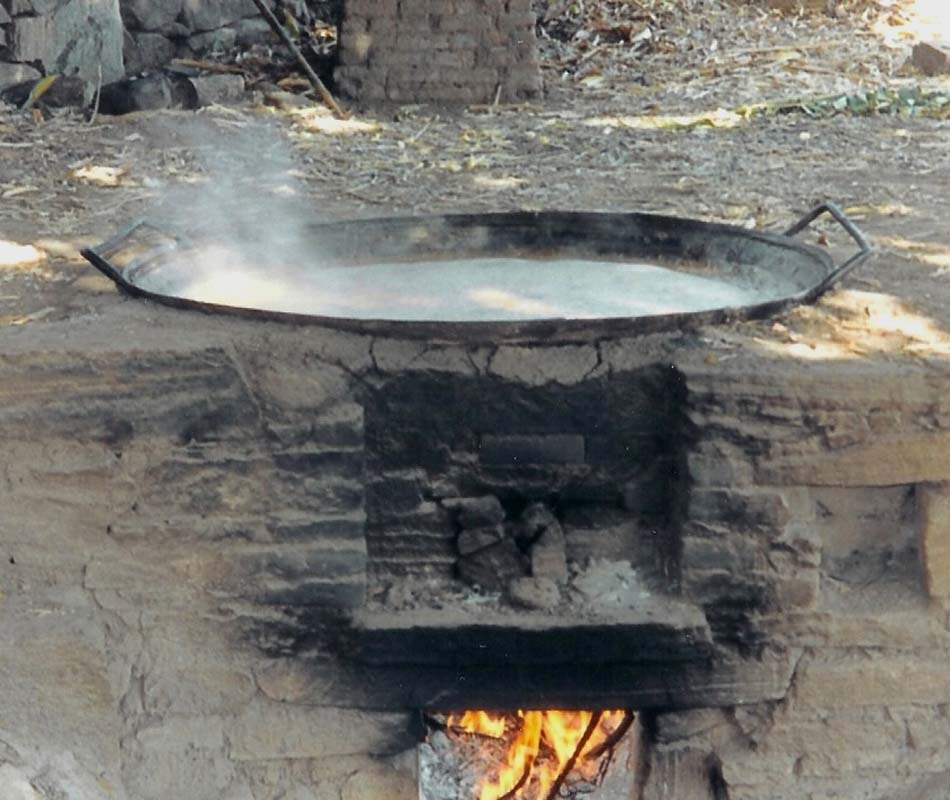
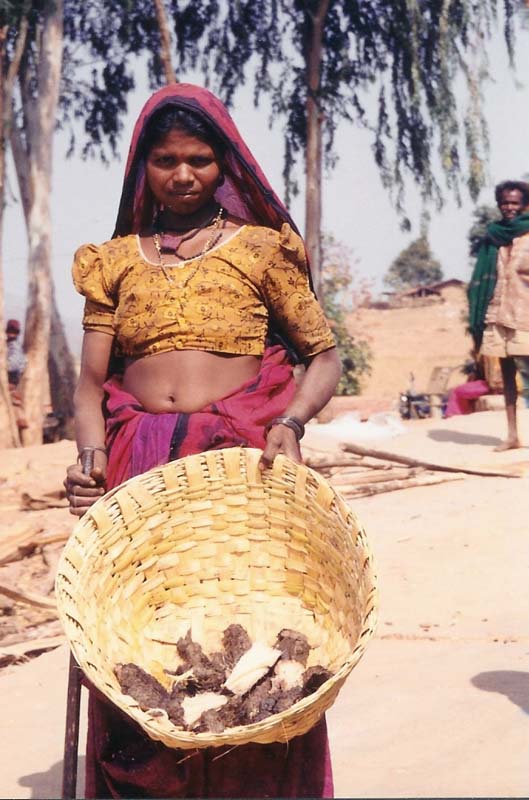
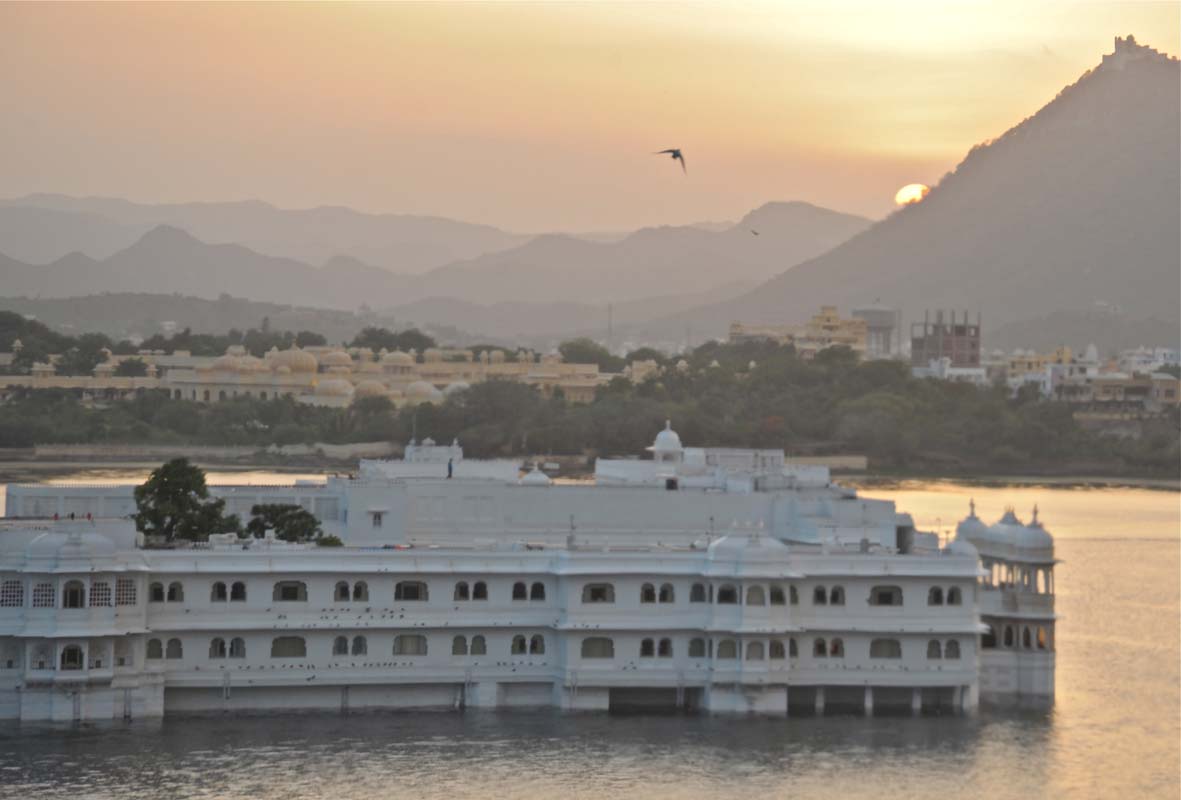
Few local words used in cooking terminology:
- Sekma or sekwa : Roast or sometimes grill
- Bhunwa : Wok fried or roast on open flame
- Angeera : Charcoal cooked
- Bhapla : Steamed
- Degchi : Narrow necked, rounded bottom cooking vessel, made of brass, copper or clay.
- Ghare ki handi : Clay pot for cooking
- Chaane : Dried cattle dung used for fuel
- Taleylogo : To fry
- Tinko : Wood fired
- Charkha : Spicy
- Churra : Crush
Having covered the Mewar belt, which comprised of Udaipur, Chittorgarh and Bhilwara, I planned to travel to Marwar to understand it, in relative terms.
I left from Kumbalgarh and proceeded to Jodhpur. Jodhpur is basically situated in the centre of Udaipur, Jaisalmer, Bikaner and Jaipur and hence played an important business base in the past.
This is predominated by the business community even now and they are known as the “marwari”. This is a very successful community now spread out throughout the country for trade. They are predominantly vegetarians.
I moved to “Mathaniya” a small town renowned for its special chilly. Pokhran was on the way towards Jaisalmer, here the first Nuclear test was conducted by India in the year 1976.
I reached Jaisalmer and this place interested me a lot, known not only for its desert sand dunes but also for its strategic location in the past era.
The fort here is magnificent and gives an extraordinary medieval feel with golden walls, narrow lanes, and exquisitely carved walls built of honey coloured sand stone. In here reside about 5000 people, probably being the only live fort in the world which has markets, offices and schools.
If we recall the “spice route”, it was this particular belt that was used by the traders to go right till Kerela. It was some time even earlier that the 6th century A.D, when the traders and the invaders from Central Asia started to come in to the Indian sub-continent. They accessed India from Kabul and Omarkot (now in Pakistan). Right from Turkey, Iran, the Arabian belt and also China, they came in for trade and gradually started settling down. Vasco da gama had also travelled this route before, he was pushed back by the other invaders only to find an alternate route to get into Kerela by sea and was finally successful to amass the spice wealth and gradually had the monopoly to sell it to Arabic countries, especially peppercorn.
Therefore, the desert belt actually played a very crucial role in the development of the Marwar state, also because the Marwar State had an agreement with the Mughals, they didn’t have to fight many wars, but rather devoted their time and energy into leisure and business unlike the Rajputs of Mewar.
These lands had a relatively drier pasture meaning that they also had less vegetation, and banked only on rains and barter trade. Other times they preserved their seasonal harvest and used them throughout the year.
As we drove the lengths of Jaisalmer from Jodhpur and proceeded toward Bikaner, we saw many plants of “Kaer and Sanger”, a local delicacy which were once sun-dried and cooked after re-hydrating it. These crops need very little moisture to be cultivated and grow wild.
Bajra or millet crop is a staple here like we have the maize grown in Mewar, chickpea is also abundantly harvested here. Groundnut oil is compared to the mustard oil which is used here.
As mentioned earlier they were mostly vegetarian, a mock meat dish was created for the vegetarians, called “chakki ki subzi”, this was made with the gluten of the wholewheat flour.
They consumed lots of buttermilk, yogurt, sun-dried lentil preparations like the “papad and wadi” and also fenugreek seeds. “Pyaaz ki subzi” or vegetable preparation of onion with green turmeric was also made here.
This place was inhibited by basically 3 communities namely, yadav’s who were the rulers, rajput’s who were the warrior’s, and the brahmin’s who were the king’s advisor’s and traders.
The rulers here had descended from the lineage of Krishan, a Hindu deity, therefore called “krishan Vanshi” or Yadav vanshi.
The Jaisalmer fort was earlier called “trikutgarh” or a triangle shaped fort abode a hill. The entrance of most of the forts are incline and have many turns and sharp curves. It was for this reason that the enemy couldn’t gain momentum to rage attack with their full might, and neither could the elephants. It is a specially constructed fort with no cement or plaster to bind making it strong, but interestingly it used the lock and key method of putting the stones together which means that the fort could be dismantled and constructed again anywhere.
The work done here on the walls is called “kandhari”, basically Muslim artisans and crafts men from Kandhar, Kabul were responsible. This land is also called “Jarokhae ki nagri” or land of carved windows. There were then cross border stories of lovers as well, Mumal, a Luderva princess and Mahender from Amarkot, now in Pakistan. Jaisalmer was once well known for its opium trade.
Communities present then:
- Bhatti rajputs who fought against the Turk invaders and ruled jaisalmer for a long time,
- Shilpin or the Kumhar’s or potters.
- Chipa’s or printers.
- Silavat or stone carvers.
- Lohar’s or the Iron Smiths.
- Sonar’s or the Gold smith.
- Churiwala or the Bangle maker.
- Julaha or the weavers.
- Leather workers.
- Sindhi Muslims.
Pushkarana Bhramins, trace their origin from the Sindhi Brahmins. They were educated and were Sanskrit scholars, advisors, treasures, historians, and creative intellect people. Merchants were Bhatti, Oswal’s and the Maheshwari’s. They were most prosperous bankers.
Muslim singers and musicians were the langaa’s and manganiya’s who played the “sarangi, and the shahanai”.
Ravana rajputs, who were the paagi’s or the ones who were knowledgeable about the foot prints of the animals and man, these days they are associated with the B.S.F or the border security force.
Rajputs of Jaisalmer were attached more toward the Sind rather than the Marwar. Also because Rani Padmini was from Jaisalmer and was married in the Mewar family and had the same enemy Al-a-uddin khilji.
It was indeed very informative, both from the culture, tradition, and lifestyle as well as from the culinary point of view. I had a small halt in Jaipur before I left for Mumbai. At Jaipur, I meet Her Highness, “Lakshmi Kumari Chundavat”, who very patiently shared her knowledge about the era of battle and survival of the fittest.
This was a very interesting culinary expedition in the land of the warriors!
